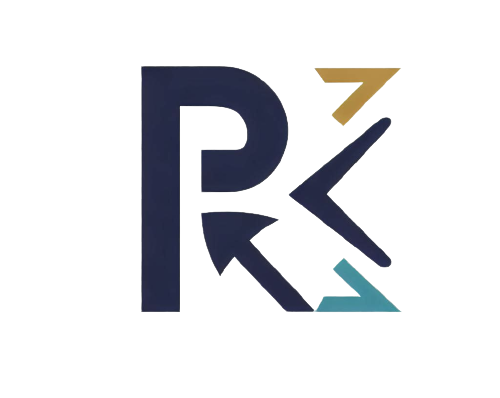Human Design has emerged as a fascinating tool for self-discovery, providing insights into individual strengths, challenges, and life purpose. As more people seek ways to understand their unique personalities, the use of Human Design software has gained popularity, offering a streamlined approach to generate and interpret detailed charts. These software solutions simplify complex concepts, making it easier for beginners and experienced users alike to explore the depths of Human Design systems. This article delves into the essentials of Human Design software, its benefits, features, and how it can enhance personal development.
What Is Human Design Software?
Human Design software is a specialized digital tool designed to create comprehensive charts based on the principles of the Human Design system. This system combines elements from various disciplines, including astrology, the I Ching, the Kabbalah, and quantum physics. By inputting birth data—date, time, and location—users can generate a unique chart that maps out energy centers, profiles, and defined channels that influence life patterns and decision-making strategies.
Unlike manual chart interpretation, which requires in-depth knowledge of complex symbols and systems, Human Design software automates much of this process. The output typically includes a body graph illustrating a person’s energy flow and characteristics. Users receive detailed explanations that are easier to understand, making it an efficient way to access personalized insights.
Key Features of Human Design Software
Most Human Design software platforms offer features that enhance the user experience and deepen the understanding of personal charts. A primary function is generating an accurate Human Design chart by integrating astrological data with the I Ching hexagrams and other foundational elements of the system. The software calculates and visualizes nine energy centers, showing which ones are defined and which are open, providing a comprehensive overview of an individual’s energetic makeup.
 Another essential feature is profile analysis. Each person’s Human Design profile is linked to certain life themes and behaviors, often described by two numbers representing personality traits and life purpose. Many software programs offer explanations of these profiles in plain language, helping users grasp their significance without needing extensive study.
Another essential feature is profile analysis. Each person’s Human Design profile is linked to certain life themes and behaviors, often described by two numbers representing personality traits and life purpose. Many software programs offer explanations of these profiles in plain language, helping users grasp their significance without needing extensive study.
Additionally, software platforms may include tools for relationship compatibility analysis, helping users compare charts with partners, friends, or family members. This can provide valuable insights into how different designs interact and suggest ways to improve communication and understanding. Some programs also offer specialized reports tailored to specific areas of life, such as career, health, or decision-making.
Benefits of Using Human Design Software
One of the most significant advantages of using Human Design software is accessibility. Manually calculating a Human Design chart can be time-consuming and prone to errors. Software solutions automate this process with precision, ensuring that users receive accurate and reliable charts every time. This reduces the learning curve for beginners who may be overwhelmed by the intricate details of the Human Design system.
Another benefit is the convenience of instant results. Many software platforms provide immediate chart generation, allowing users to explore their design without waiting for a professional analysis. This immediacy encourages deeper engagement with the system, as users can repeatedly refer to their charts and interpretations whenever questions arise.
Personalized interpretations are another crucial advantage. Human Design software often includes detailed reports that explain various aspects of a chart, from energy centers and gates to profile roles and strategy types. These explanations are typically written in straightforward language, making the concepts easier to apply in daily life. Users can gain actionable insights that promote better decision-making, improved relationships, and enhanced self-awareness.
Some advanced software platforms even offer customizable features, allowing users to dive deeper into specific aspects of their design. Whether focusing on emotional patterns, career alignment, or life purpose, these tools help tailor the Human Design experience to individual needs.
How Human Design Software Supports Personal Growth
The insights provided by Human Design software can be transformative for personal growth. Understanding your energy type—whether you are a Manifestor, Generator, Projector, or Reflector—can help you make decisions that align with your natural strengths. The software’s guidance on strategies for responding to life events enables users to avoid resistance and embrace their unique paths with confidence.
Energy center analysis is another way the software supports self-awareness. Defined centers represent consistent energies that shape personality traits, while open centers indicate areas where external influences may have a stronger impact. By recognizing these dynamics, individuals can make conscious choices about how they interact with others and manage their environments.
Profiles and authority types, as interpreted by Human Design software, offer practical advice for navigating relationships and career decisions. For example, someone with emotional authority may learn to wait for clarity before making significant choices, while a person with sacral authority can trust their immediate gut responses. These tailored strategies foster growth by encouraging alignment with one’s inner truth.
Lastly, the compatibility and relationship insights provided by many software platforms can improve interpersonal dynamics. By comparing charts and understanding the energetic connections between individuals, users can strengthen communication, empathy, and collaboration. Human Design software transforms abstract concepts into actionable guidance, empowering users to live more authentically and harmoniously.
Choosing the Right Human Design Software
When selecting Human Design software, it is important to consider factors such as user interface, chart accuracy, and additional features. A well-designed interface makes it easy to input data and interpret results, even for those new to the system. Accuracy is paramount, as even minor errors in birth data processing can lead to incorrect chart interpretations.
Some software options are free or offer basic chart generation, while premium versions provide in-depth reports and advanced customization tools. Users should assess their needs and budget before choosing a platform, considering whether they prefer simple chart generation or comprehensive analysis with personalized insights.
Many platforms also offer mobile apps, enabling users to access their charts on the go. This convenience can enhance engagement by allowing continuous exploration of Human Design concepts in various settings. Reviews and user feedback can further guide choices, highlighting the reliability and usability of different software solutions.
In conclusion, Human Design software is a valuable resource for anyone seeking to deepen their understanding of themselves and others. By automating chart creation and offering detailed interpretations, it simplifies a complex system, making it accessible to users of all experience levels. The benefits of immediate results, personalized guidance, and enhanced relationship insights make it a powerful tool for personal growth and self-discovery.
